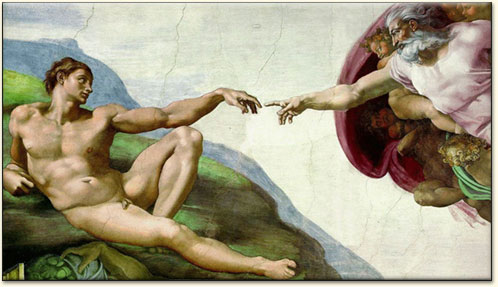Let me first introduce Dr. Lampo Leong, the professor of art in painting and drawing at the University of Missouri at Columbia. He has studied in both China and the United States for a number of years, allowing him the experience of both cultures. This bi-cultural understanding of both the east and the west is what has inspired him to study the similarities in both western and eastern art, particularly the persistent presence of the omega (Ω) curve in famous works of art around the world.
Dr. Leong explained how the Ω curve was a symbol of loftiness and grandeur in visual art because of the its shape and contours, which give off a sense of liveliness and sublimity. The fullness of the Ω curve imitates nature in that living creatures appear to be "fullest" at their peak of life, as opposed to being "deflated" when they are older. He compared a newly inflated balloon to one that was days old, and pointed out the difference in shape. The newer one had a very similar shape to that of the Ω curve, and so do things in nature, such as ripe fruits, and young people (as compared to the elderly).
I found his study to be very engaging because the points he made were obvious, yet I had never quite paid attention before. The design of Ω curve is one that is universally because it is one that is found in nature. Artists in both eastern and western culture had realized that this shape was one that connoted life and loftiness, which can connect to spirituality.
Here are some of the examples that he explored. Look for the Ω curve and see how it defines the characteristics of grandeur and loftiness.
Han Gan's Pasturing Horses

Michelangelo's Creation

Hagia Sophia in Instanbul, Turkey

After the presentation, we were able to see Dr. Leong's calligraphy, and it also incorporates the Ω curve in order to give it the feeling of energy that the calligrapher puts into his work. His demonstration truly showed how Chinese calligraphy uses the body's "chi" (energy) in order to create this feeling!


This was done in a matter of seconds!
You can see more of his work at The Nelson Gallery.
Photo Credits:
Wikipedia
Web Exhibits
CNIDUS
Amanda Yib
Amanda Yib
No comments:
Post a Comment